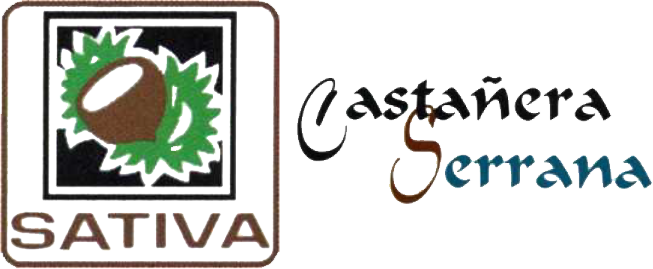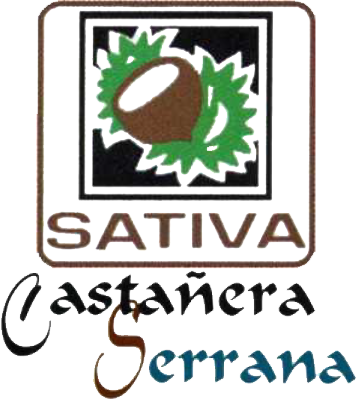The ecosystem of the chestnut orchard
The chestnut fields in production of Huelva province occupy 3,500 hectares, mainly splitted amoung 14 municipalities
The chestnut orchards integrated in the cooperative are situated in the Parque Natural Sierra de Aracena y Picos de Aroche, which itself is part of the Special Conservation Area of the network Red Natura 2000, integrated in the bigger Reserva de la Biosfera Dehesas de Sierra Morena. The chestnut orchards are an extraordinary ecosystem, they constitute an important part of the local identity, with the chestnut trees being very important for the local biodiversity, contributing to maintain an equilibrium among the Fauna, the Flora and the sustainable management of the available resources.

The chestnut fields in production of Huelva province occupy 3,500 hectares, mainly splitted amoung 14 municipalities (Alajár, Almonaster la Real, Aracena, Aroche, Castaño del Robledo, Cortegana, Cortelazor, Fuenteheridos, Galaroza, Jabugo, Linares de la Sierra, Los Marines, La Nava and Valdelarco). This represents a population of about 270,000 Chestnut trees. The average age of these trees is around 350-400 years, with some exceeding 1000 years.

An ecosystem is the natural result of the interaction between living beings and the inert elements of nature. This interaction between the inert elements (mainly the climate, the relief of the terrain and the chemical composition of the soil) with the living elements (fauna, flora and fungi) constitute it’s biodiversity.
The ecosystem of chestnut orchards in the Natural Park Sierra de Aracena y Picos de Aroche is unique. It must be protected and maintained in the best conditions for future generations. The cooperative Castañera Serrana and its members are compromised to contribute towards these goals.

The cultivation of the chestnut orchards in the Sierra is a wonderful gift for society as a whole. The sustainable management of the chestnut orchards helps maintain an extraordinary variety of vegetation and animal life, improves the nutrition cycles and fertilizes the soil, reducing erosion. The chestnut orchards act as a CO2 buffer, contributing to avoid global warming by reducing the quantity of green-house gases. It improves water accumulation and soil integrity, allowing water retention, which in turn generates wealthy rivers and creeks, in other words, it brings us health and a better quality of life.
Side by side with the chestnut trees we can observe a great variety of specimens belonging to the Mediterranean flora:
Hawthorns (Called Tileros), Tree Strawberries, Narrow-leaved Mock Privet , Wild Laurel (Orillera), Portuguese Laurel Cherry, Field Gromwell, Heath, also mixed with climbers and bindweed (Brambles, Wild Wine, Ivy, Wild Rose, Sarsaparilla and Honeysuckle). In the herbaceous stratum we can find Thimbles, Lilies, Ferns, Oregano, Pennyroyal, Mint, Thyme, Wild Rosemary, Lavender, Southern Wormwood and Peonias. We can also find a great variety of orchids and other species that enrich flowering and pollination in the Spring.

Equally coexisting in the chestnut orchards is a rich Fauna. In the invertebrate’s group, performing an important role for soil formation, pollination, for decomposing organic material, are many different worms, bees and other beetles and their larvae. Because of the fluvial network in the Natural Park, there exist many small reptiles and amphibians, like the Iberian Newt and the Southern Marbled Newt, the Fire Salamander, the Iberian Midwife Toad, the Common Parsley Frog. Standing out among the reptiles are the Horseshoe Whip Snake, the Montpellier Snake and the East Iberian Sand Racer. There is a great variety of small birds, often insectivores, such as Warblers, Robins, Starlings, Great Tits, Eurasian Hopoes and also some nocturne species represented by Tawny Owls, Barn Owls and Eagle Owls. Regarding the daytime birds we can easily observe Buzzards, Booted Eagles, Red Kites and Eurasian Griffon Vulture. Finally, in the group of mammals, the group of bats (Horseshoe Bat and Cave Bat) are very important for their contribution to maintain these tree masses in an ecological balance. We can also observe the presence of the Field Mice, Dormouses, Foxes, Common Genets, Wildcats, Badgers, Weasels and Stone Martens. Many of them live in cavities inside the chestnut tree’s trunk. The chestnut orchards also witness the frequent visits of Deers and Wild Boars that come around searching for food. Their presence and their diet (green shoots for the dear, chestnuts and tubers for the Boars) can cause imbalance and productivity loss to the chestnut producers who must therefore protect their orchards.
The presence of the mushroom kingdom in the chestnut orchards is also very relevant. Notably, the Natural Park Sierra de Aracena Y Picos de Aroche is one of the richest environments in species in Europe. Over 600 species have being identified of which more than 30 are edible, making the chestnut orchards a privileged natural space to exploit when searching for them. Among edible mushrooms, we can find Caesar’s Mushroom (Amanita Caesarea), Wood Blewits (Lepista Nuda), Chanterelles (Cantharellus Cibarius), Dark Ceps (Boletus Aereus), Parasols (Macrolepiota Procera), Black Trumpets (Craterellus Cornucopioides). Mushrooms play an important role in the ecological functioning of the forest, associated to the tree’s roots, they allow for the absorption of essential nutrients and help to decompose organic material. Recent studies also indicate that the fungi filaments (mycelia) create a large network of communication used by the trees and plants in order to exchange information and nutrients when needed.
The importance of the maintenance of this biodiversity for the ecological equilibrium in the chestnuts orchards and for the health of the trees cannot be overstated, because it is an important factor in maintaining the productivity of these mountain trees.
The varieties present in the chestnut orchards in the Natural Park are unique in Spain. Each variety has different genetic characteristics, with extraordinary taste, suitable both for fresh or processed consumption. The most abundant varieties are: Diego Vásquez, Helechal, Comisaria and Plantalajar. Their maturation process is progressive, this allows the Cooperative to adapt the moment of the harvest to the climatic conditions. In this way, the fist type to mature are Plantalajar and Comisaria followed by Helechal and at last Diego Vásquez. Along with the amount of rainfall and temperature, the sustainable management and other facts linked to it will define the quality and size of the chestnuts of each variety.

Apañando 1- IPHA
Apañando 1- IPHA

Burro cargando castañas- IPHA
Burro cargando castañas- IPHA

Apañando 2- Asoc. Lieva
Apañando 2- Asoc. Lieva

Sacos de castaña- V. Moya
Apañando 2- Asoc. Leiva

Talando 1- Asoc. Lieva
Talando 1- Asoc. Lieva

Talando 2- Asoc. Lieva
Talando 2- Asoc. Lieva

Maquinaria- Desconocido
Maquinaria- Desconocido

Apañando 1- IPHA
Apañando 1- IPHA

Burro cargando castañas- IPHA
Burro cargando castañas- IPHA

Apañando 2- Asoc. Lieva
Apañando 2- Asoc. Lieva

Sacos de castaña- V. Moya
Apañando 2- Asoc. Leiva

Talando 1- Asoc. Lieva
Talando 1- Asoc. Lieva

Talando 2- Asoc. Lieva
Talando 2- Asoc. Lieva

Maquinaria- Desconocido
Maquinaria- Desconocido



